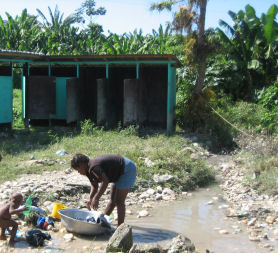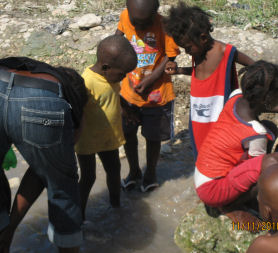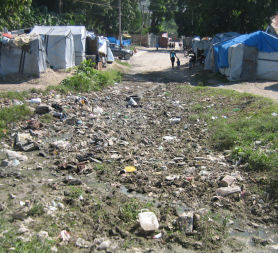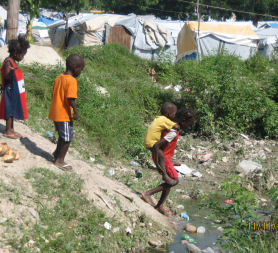Haiti cholera could hit ‘hundreds of thousands’
The spreading cholera epidemic in Haiti could see up to 270,000 people infected within a year, a Pan American Health Organisation spokesman tells Channel 4 News.

The death toll in Haiti’s cholera outbreak, which began three weeks ago, has so far reached 800.
Charities in Haiti are warning that the hospitals are overflowing and soon patients may have to be treated on the streets.
An epidemiologist at the US Centers for Disease Control and Prevention told a press conference in the United States, by phone from Haiti, that the emergency was worsening.
“As of 8 November, we had about 640 deaths. Today we are at 800,” he said.
“The situation is more dire every day. Haitians are in line. Hospital beds are gone. Hospitals are completely overrun.”

Epidemic
A spokesman for the Pan American Health Organisation (PAHO), Daniel Epstein, told Channel 4 News the epidemic was “continuing to spread”.
He said: “I don’t know that we have a good sense of the speed at which it is going. It is set to increase fairly substantially because in other areas around the world where cholera has broken out, the propagation has been rapid.
“Looking at earlier models, such as in Peru, it wouldn’t surprise us to see 200,000 to 270,000 infected within a year…We know that it’s continuing to spread both in places that it has already struck and to new places…We are not able to predict at all what the death rate will be. Our aim is to save lives and keep the death rate low.”
He said stopping the spread would be difficult because three quarters of people with cholera do not have symptoms, so they are not aware they have the disease and it spreads easily.
The country is struggling to recover from the aftermath of a devastating earthquake in January this year, in which 250,000 people died and many more were left homeless. Haiti was spared the worst of Hurricane Tomas last week, but flooding caused by the storm has also exacerbated the situation.

Charities working in the country are also struggling with co-ordinating the response with other non-governmental organisations (NGOs), private healthcare organisations and the Government.
But Mr Epstein said most people with cholera can be treated.
“Most people are treatable outside healthcare structures if they have early admission – if you give them rehydration salts and don’t have to keep them in,” he said.
Hospitals overflowing
Stefano Zannini, Head of Mission for Medecins Sans Frontieres in Haiti, said: “It’s a really worrying situation for us at the moment. All of the hospitals in Port-au-Prince are overflowing with patients and we’re seeing seven times the total amount of cases we had three days ago…

“We are really worried about space. If the number of cases continues to increase at the same rate, then we’re going to have to adopt some drastic measures to be able to treat people. We’re going to have to use public spaces and even streets.
“I can easily see the situation deteriorating to the point where patients are lying in the street, waiting for treatment.”
Camps
There are fears now that the epidemic will spread fast if it hits the crowded camps sheltering earthquake survivors in Port-au-Prince.
Haiti’s health ministry said today that on Tuesday there were 724 deaths as a result of the outbreak, and 11,125 hospitalised cases.
The photos on this page are from the Village Gaston area of Carrefour, part of Port-au-Prince. The camp is called La Banque and houses Internally Displaced Persons (IDPs) from the January earthquake. Carrefour is one of a number of places in Port-au-Prince where people have presented symptoms of cholera.
The pictures, taken by Franz Saintil, show children playing and bathing in stagnant and polluted water, and women washing. There are toilets near the stagnant water. Families said they treat the water with household bleach, and then cook with it. They are worried about cholera, but say they don’t receive enough clean water each week to cover their needs, so they have to use river water.